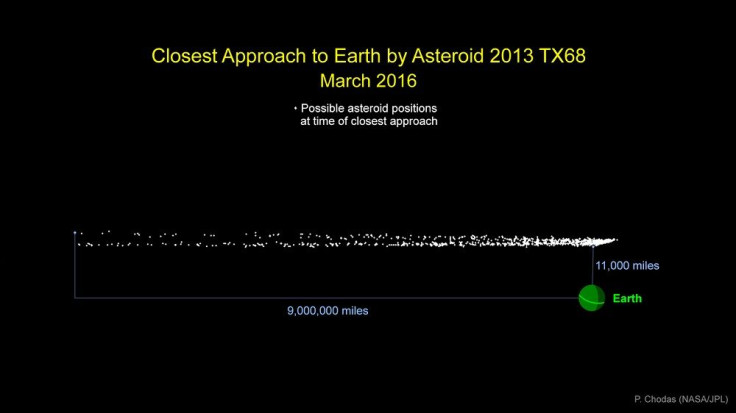NASA: Newly spotted asteroid to fly close to Earth on March 5, but no collision happening

The National Aeronautics and Space Administration (NASA) said on Tuesday an asteroid would fly close to the Earth next month. However, the closest that Asteroid 2013 TX68 would fly close to the planet on March 5 is from 11,000 miles or 17,000 kilometres to 9 million miles or 14 million kilometres.
Like us on Facebook
That means end-of-the-world forecasters cannot use Asteroid 2013 TX68’s flyby to scare people of an Apocalypse. The wide range was because of the short observation period made by NASA since the discovery only in 2013 of the 100-foot long (30 metres) rock, reports CNET.
Doomsday prophets are having a heyday posting warnings on social media, like the one by YouTuber End Of The World who claims that the asteroid is 20 times larger than the Chelyabinsk meteor that hit Russia. The video clip has so far almost 60,000 hits. To debunk the alarmist tone of most doomsayers, NASA assured the asteroid would not hit Earth on its March 5 flyby. But in 2017, the next flyby, the asteroid has a 1-in-250 million chances of colliding with the planet and smaller chances when it flies by in 246 and 2097.
“The possibilities of collisions on any of the three future flyby dates are too far too small to be of any real concern,” says NASA Centre for NEO Studies Manager Paul Chodas. He adds that future observations would likely cut the probability of a collision further.
Chodas also clarifies that the asteroid, which broke many windows in the Russian city before it landed on a frozen lake and did not cause further damaged, is only double, not 30 times the size of the Chelyabinsk asteroid. However, it could possibly hit satellites in orbit.
In September 2015, a similar rumour hit the Internet after some social media sites warned of a 2.5-mile wide comet which was expected to slam on Earth between Sept 15 and 28. NASA then debunked the speculation and was proven correct since no such collision happened.





















